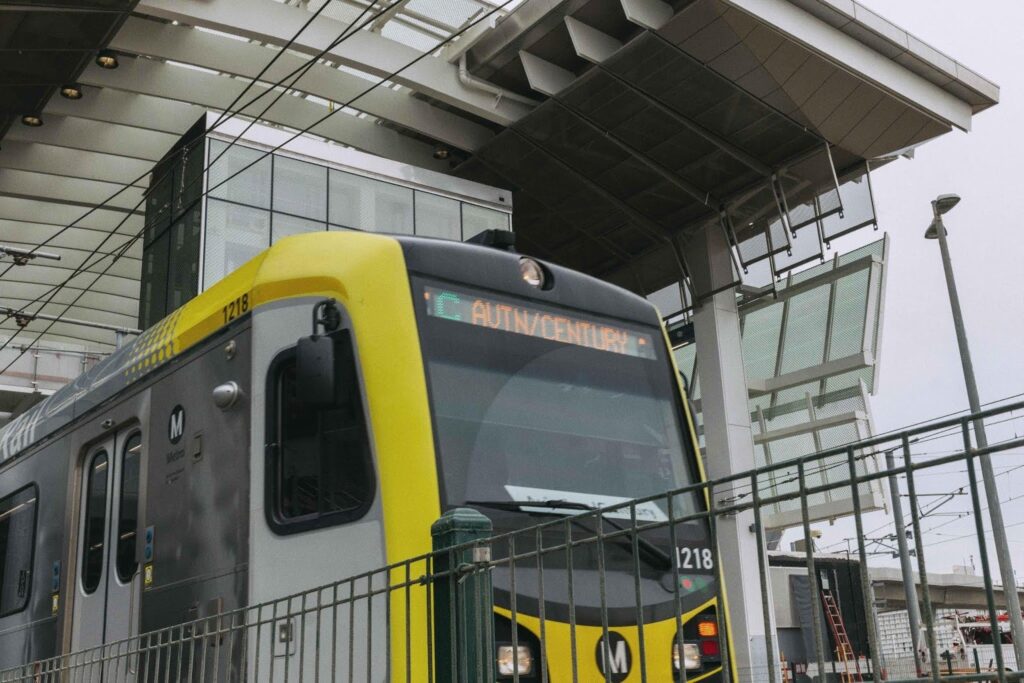
“Deciding what kind of city we want to be” with the Smart Cities Collaborative
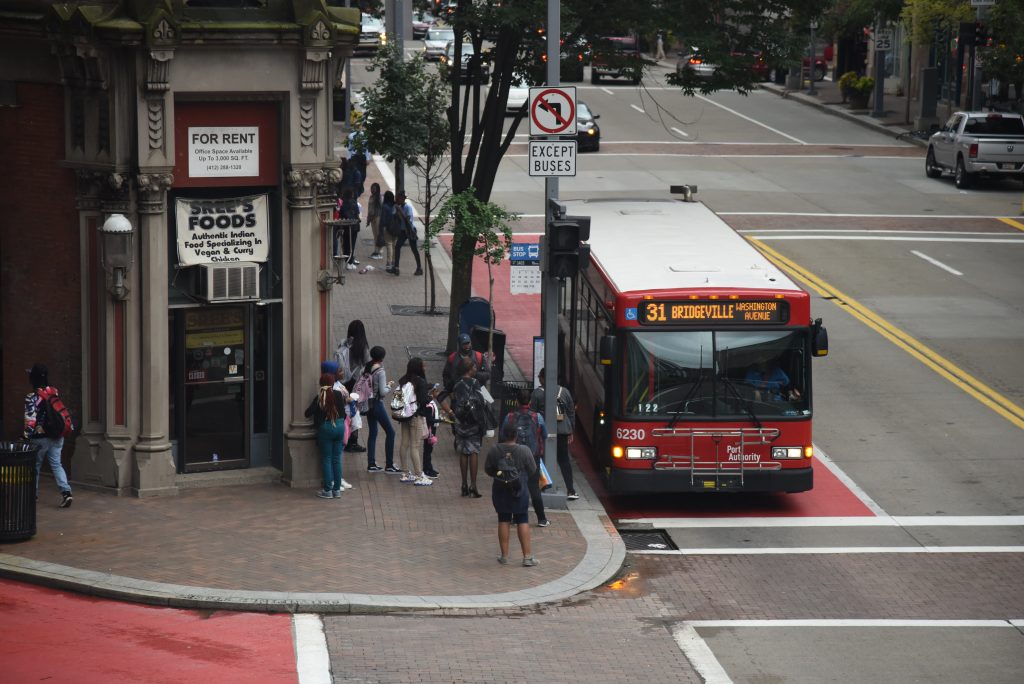
While fighting to stay ahead of a transportation and mobility landscape that changes by the day, 70+ people representing 23 cities gathered in Pittsburgh last week for the third meeting of our Smart Cities Collaborative to band together to solve problems and learn from each other.

While we were in Pittsburgh, Seattle Department of Transportation’s Benjamin de la Peña gave an interview to Seattle Business Magazine about automated vehicles that nails what the Collaborative is all about: “We do not want the technology to decide what kind of city we want to have. We need to decide what kind of city we want and have the technology adapt to that city,” he said.
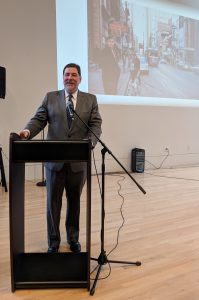
Pittsburgh Mayor Bill Peduto
This is the core mission of the Smart Cities Collaborative, and why we gathered again for three days in Pittsburgh last week. We were incredibly fortunate to have Pittsburgh Mayor Bill Peduto kick things off for us with a stirring reminder of the aim for all of this work, which was embedded in the motto for their application to USDOT’s Smart Cities Challenge from 2016: “If it’s not for all, it’s not for us.”
Thanks to support from AARP’s Public Policy Institute and Jana Lynott, we started trying to put that maxim into practice right out of the gate with a tour of two particular intersections in Pittsburgh that could stand to have some major improvements made to better serve everyone who needs to use them.
As biking rates continue to go up and eventually shared bikes or scooters from companies like JUMP or Lime roll out, the city will continue having to carefully navigate the tension between allowing a market to develop and thrive, while also ensuring that new options also help the city accomplish their very ambitious goals. Goals like eliminating all traffic fatalities (Vision Zero), giving everyone access to fresh food within 20 minutes without having to use a car, and making every trip under a mile most enjoyably achieved by walking or biking, to name just three.
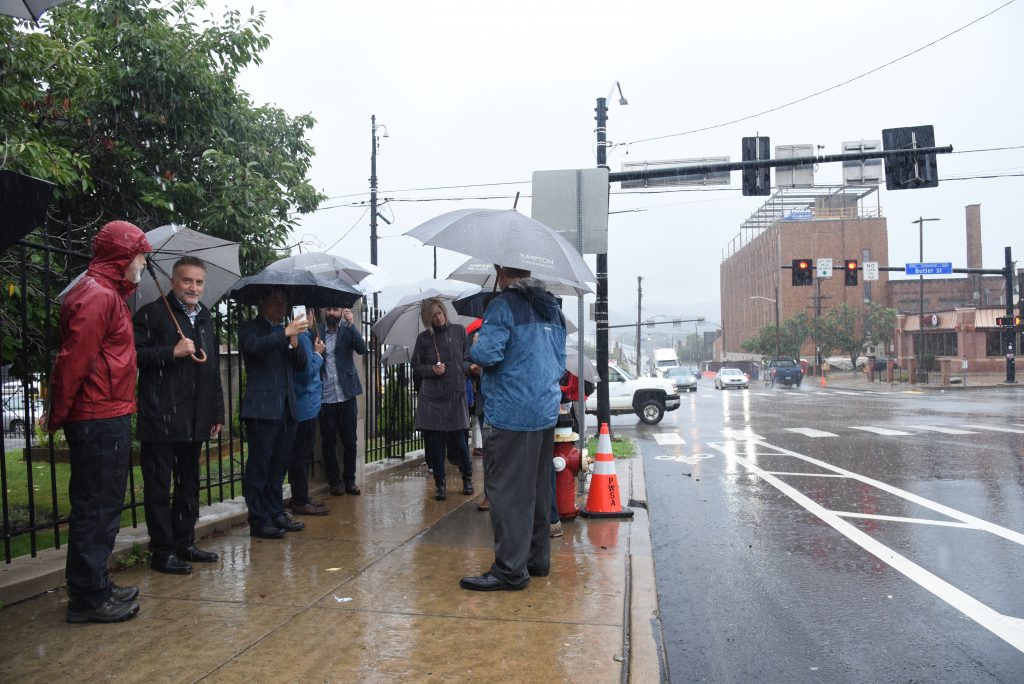
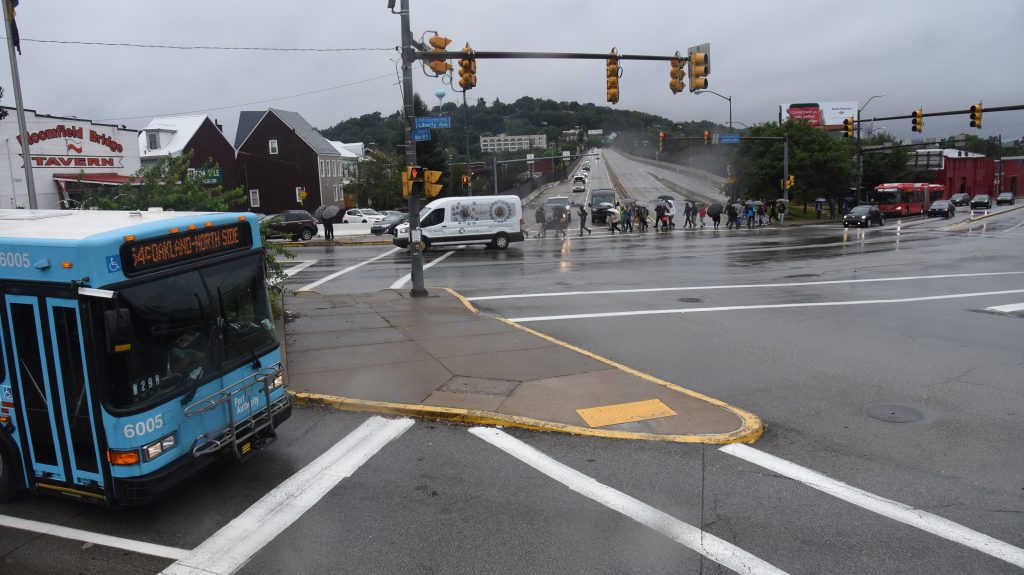
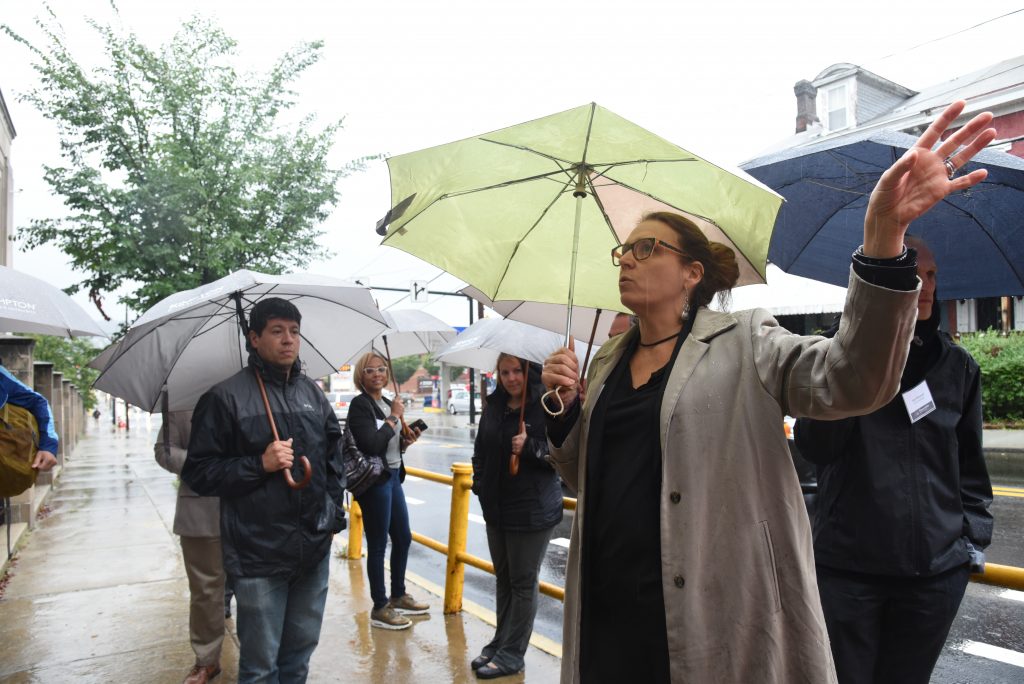
As the rain poured down, Karina Ricks, the director of Pittsburgh’s Department of Mobility and Infrastructure, described some of the challenges with a particular intersection in Pittsburgh to the Collaborative members.
So we toured these two intersections above (during a crazy week of floods in metro Pittsburgh) and then spent some time in a charrette discussing practical design changes for them, the endless tradeoffs that have to be made, and how to prioritize the city’s stated goals and values. How can cities make value-based decisions about what to prioritize? And how do you engage the public when making those difficult decisions?
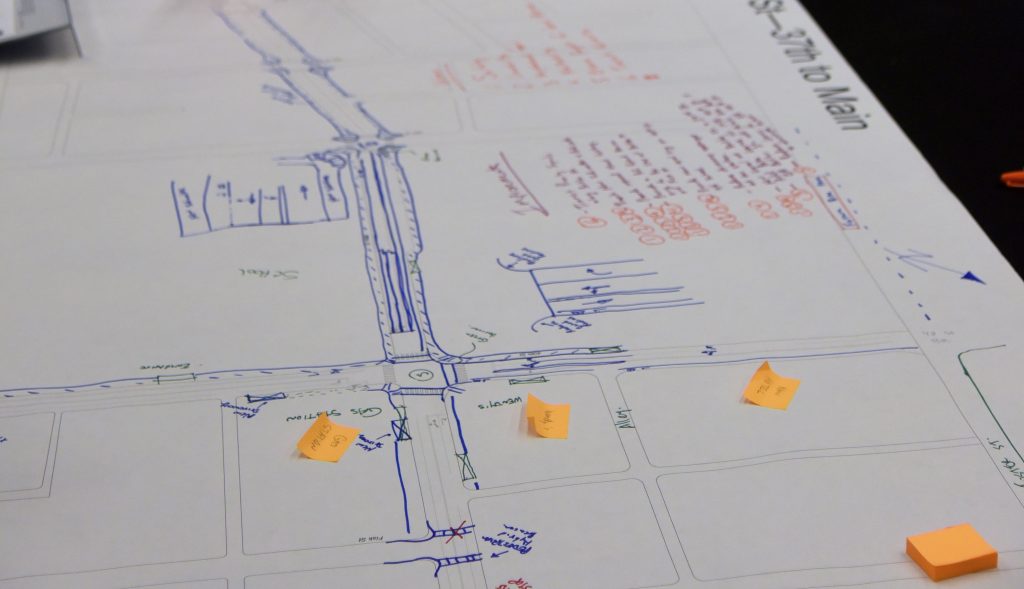
All too often these days, city transportation departments are just like the surfer desperately fighting just to stay ahead of the break of a mammoth wave. As we heard during one session about e-scooters, they’re here, the cities didn’t ask for them, and it often feels like the challenge is best stated as “they’re here and we have to find a way to deal with them.”
But instead of merely “dealing” with these new services, how can cities work to harness their potential—whether ridesourcing, automated vehicles, bikes and scooters—to accomplish something good and advance their city’s overall values, rather than just avoiding the bad outcomes? And how can cities create flexible regulatory frameworks that can be applied broadly across new mobility models as they develop?
The pace of change is perhaps the biggest part of the challenge. The best way to describe the process when cities roll out a new transit service, for better or for worse, is pretty slow and methodical. Years can pass between the day when someone first drew a new line on a map and the day that a new bus or train starts picking up passengers. But with new mobility options, it feels like the time between ideation and rollout is measured in days, not years.
To better prepare for these new services and this pace of change, we spent the better part of half a day working in groups trying to craft an ideal, holistic policy for shared active transportation—the docked or dockless bikes and scooters that are popping up rapidly in cities from coast to coast.
We were glad to be supported by Emily Warren and the team from Lime, one of the biggest companies in the U.S. providing shared bikes and scooters, to kick things off with a look at some of the hot button issues like fleet size, requirements for locking technology, and how to proactively ensure that their services are available to everyone in a community.

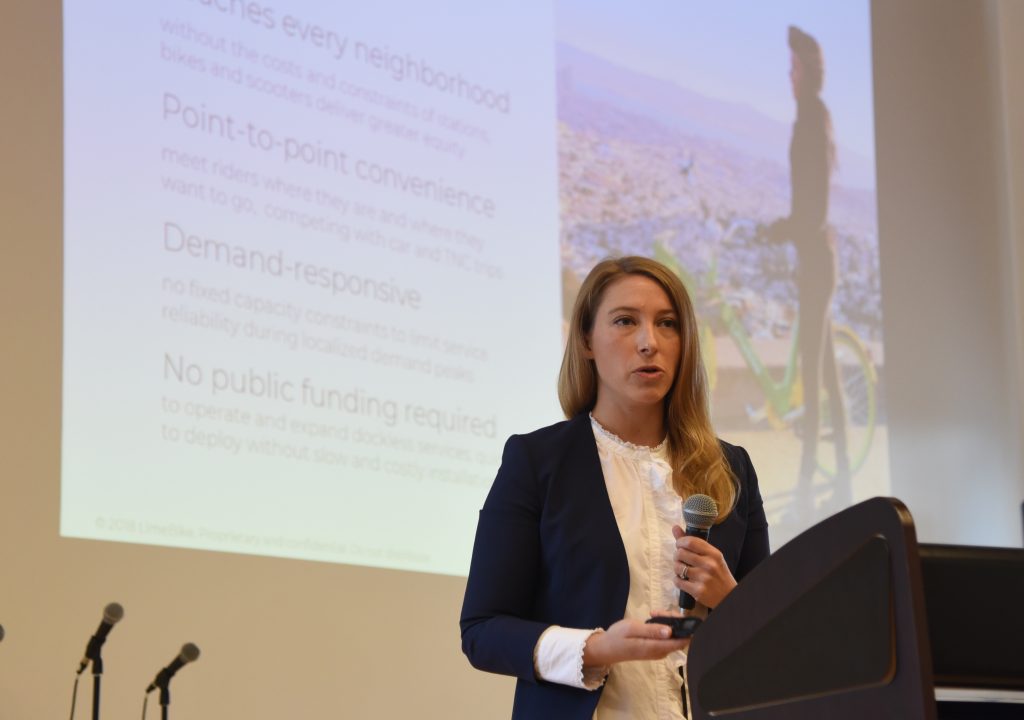
Broken up into small groups, Collaborative members chose two policy topics they wanted to develop, like equipment and safety, operations, data standards, and equity, to name just a few. Over the space of half a day, Collaborative members explored the core components of a comprehensive policy and identified key policy areas to consider, set a recommended policy floor (a fundamental basic level of policy that all cities can and should adopt), and highlighted a few options for differing levels of action in each policy area.
The exercise illustrated the power of cities coming together to solve problems, learn what’s working (or not working), and learn from each other. This is the true strength of the Collaborative and the reason we’ve continued this work for nearly two years now.
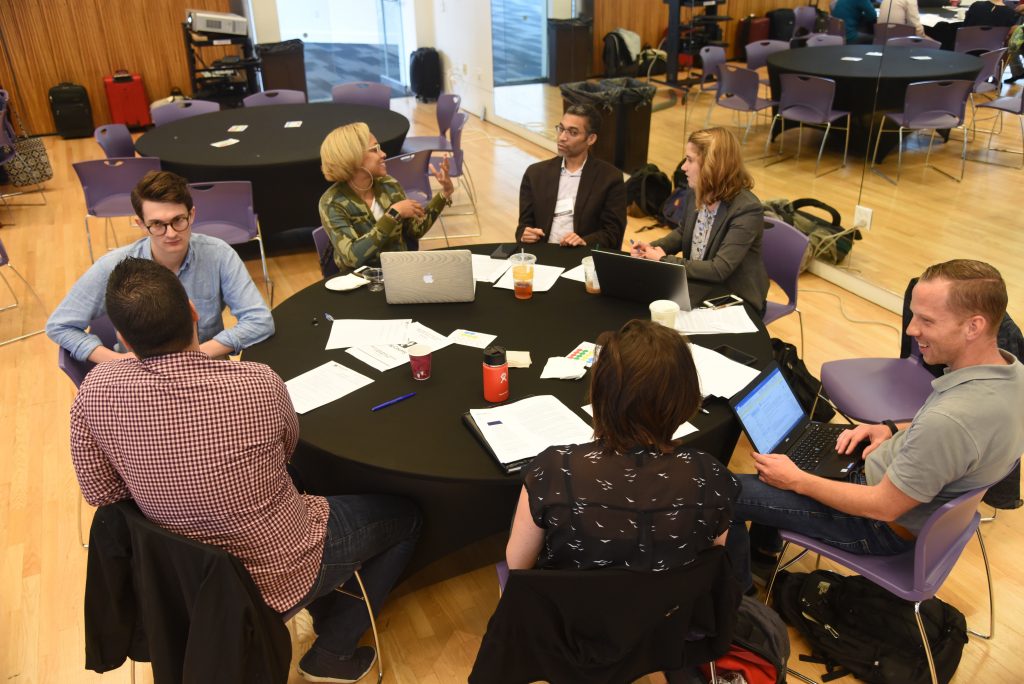
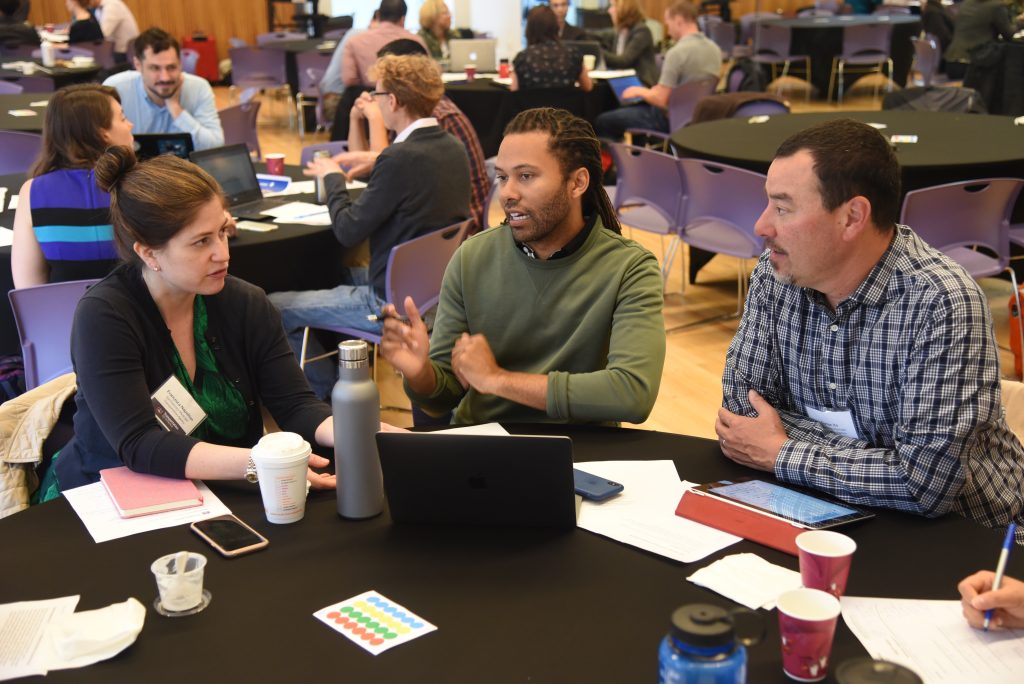
With the help of our colleagues at Smart Growth America and the National Complete Streets Coalition, we closed out the three-day meeting with a look at each city’s equity guiding policy and examined how they translate those policies into action in their projects.
Each participant shared their department’s or agency’s equity policy—or their lack of one—what that policy meant to them and how they’ve tangibly incorporated it into their projects. Participants worked to identify gaps and areas for improvement as they move forward with their projects to ensure equity and access for everyone. It was a refreshing discussion that illuminated the ongoing difficulty in applying ambitious principles to policies and then to actual projects on the ground.
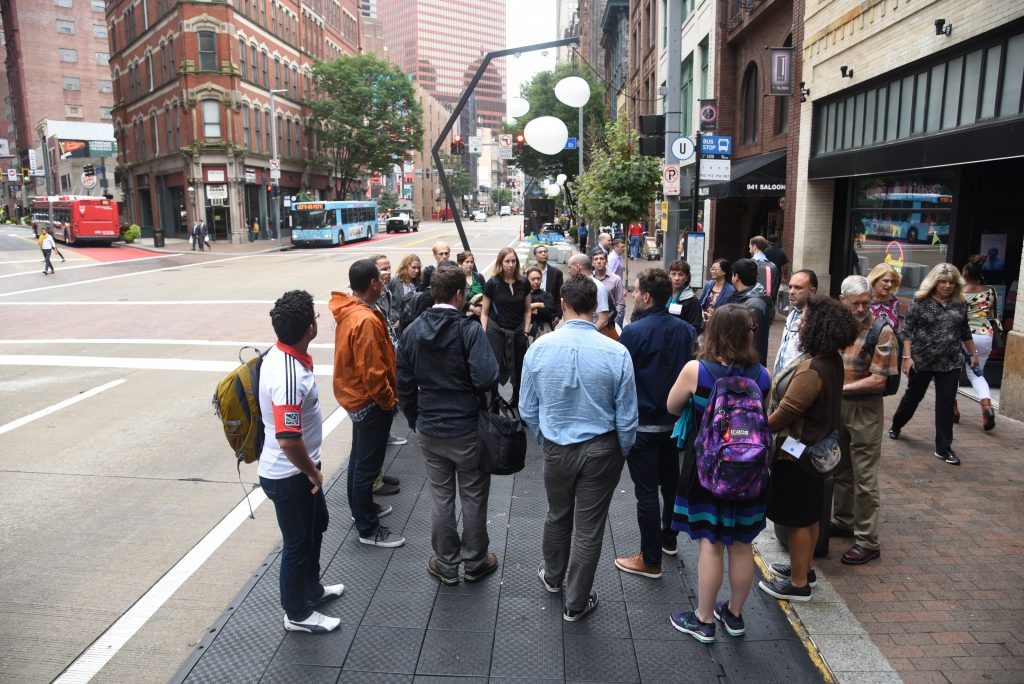
Participants getting a tour of some of the experiments going on in downtown Pittsburgh, including a painted bus lane through the incredibly busy corridor, parklets along the curb lane, artistic interventions, and a raised bus bump-out to make bus boarding easier.
The Collaborative reconvenes this December in Atlanta, just before Transportation for America’s Capital Ideas conference, which will also tackle this issue of new mobility. At Capital Ideas (open for registration now!), we will be focusing on the states’ role and how they can lead the way while also working in partnership with the providers and cities to create a transportation system that works for everyone.
Join us in Atlanta for Capital Ideas this December! Psst, find out what’s on the agenda here.




